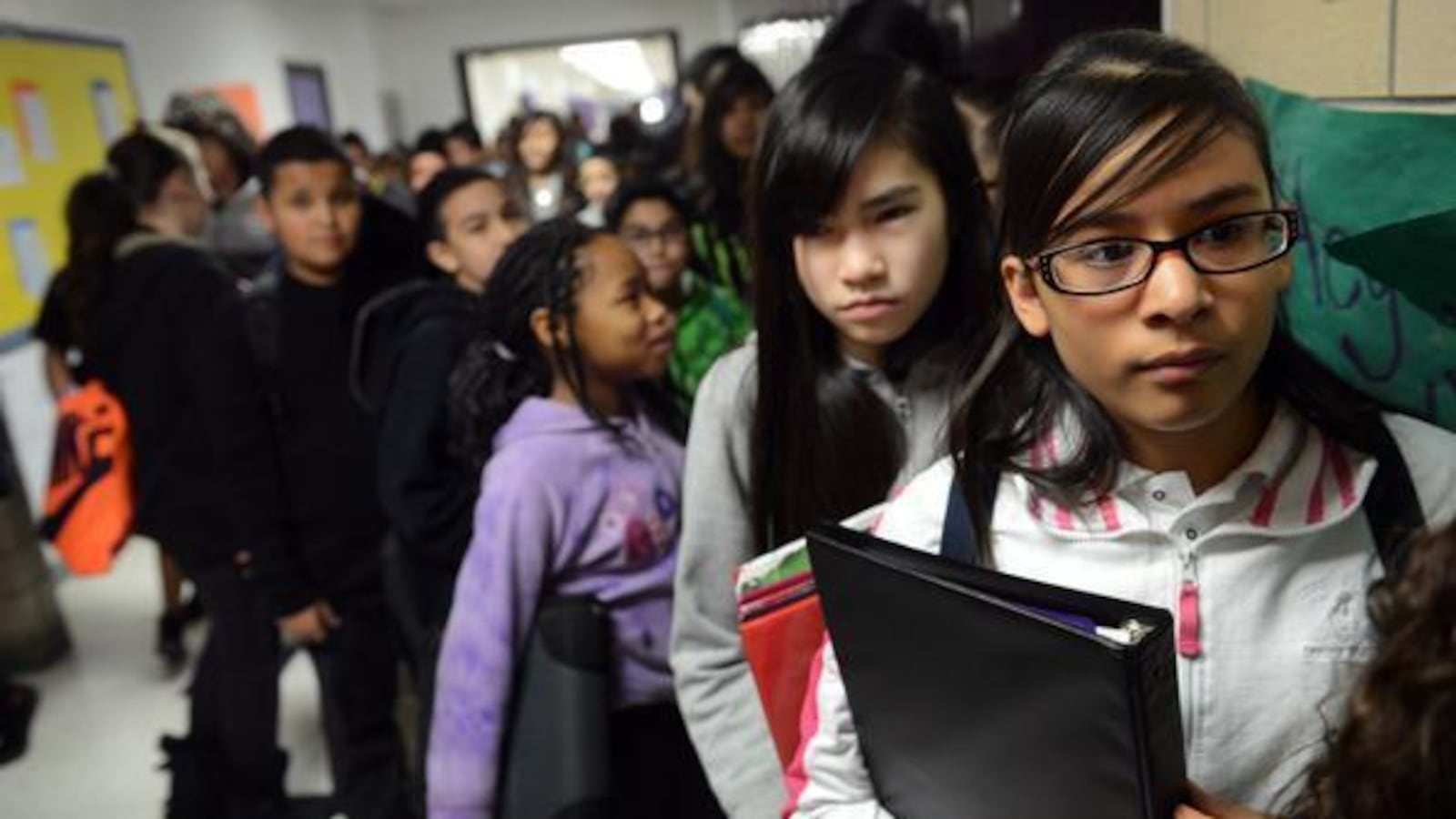Colorado’s strong economy has opened the door for state lawmakers to send a major cash infusion to the state’s public schools.
As they finalized the recommended budget for 2018-19, the Joint Budget Committee set aside $150 million, an additional $50 million beyond what Democratic Gov. John Hickenlooper had asked for, to increase funding to schools.
“We believe this is the most significant reduction in what used to be called the negative factor since it was born,” said state Rep. Millie Hamner, the Dillon Democrat who chairs the Joint Budget Committee.
Colorado’s constitution calls for per pupil spending to increase at least by inflation every year, but the state hasn’t been able to meet that obligation since the Great Recession. The amount by which schools get shorted, officially called the budget stabilization factor, is $822 million in 2017-18. Under state law, this number isn’t supposed to get bigger from one year to the next, but in recent years, it hasn’t gotten much smaller either.
But a booming economy coupled with more capacity in the state budget created by a historic compromise on hospital funding last year means Colorado has a lot more money to spend this year. In their March forecast, legislative economists told lawmakers they have an extra $1.3 billion to spend or save in 2018-19.
The recommended shortfall for next year is now just $672.4 million. That would bring average per-pupil spending above $8,100, compared to $7,662 this year.
Total program spending on K-12 education, after the budget stabilization factor is deducted, should be a little more than $7 billion, with the state picking up about $4.5 billion and the rest coming from local property taxes.
The budget debate this year has featured Republicans pressing for more ongoing money for transportation and Democrats resisting in the interest of spreading more money around to other needs. The positive March forecast reduced much of that tension, as a $500 million allocation for transportation allowed a compromise on roads funding in the Republican-controlled Senate. That compromise still needs the approval of the Democratic-controlled House, but suddenly a lot of things are seeming possible.
“We knew we were going to have more revenue than we’ve ever had to work with,” Hamner said of the status at the beginning of the session. But that presented its own challenges, as so many interest groups and constituencies sought to address long-standing needs.
“The fact that we’ve been able to reach such incredible compromises on transportation and K-12 funding, I think most members will be very pleased with this outcome,” Hamner said. “Where we ended up is a pretty good place.”
The big outstanding issue is proposed reforms to the Public Employees Retirement Association or PERA fund to address unfunded liabilities. A bill that is likely to see significant changes in the House is wending its way through the process. The Joint Budget Committee has set aside $225 million to deal with costs associated with that fix, which has major implications for teachers and school districts budgets.
The Joint Budget Committee has also set aside $30 million for rural schools, $10 million for programs to address teacher shortages, and $7 million for school safety grants.
The budget will be introduced in the House on Monday. Many of the school funding elements will appear in a separate school finance bill.
Going forward, there is a question about how sustainable these higher funding levels will be.
“It does put more pressure on the general fund,” Hamner said. “If we see a downturn in the economy, it’s going to be a challenge.”


